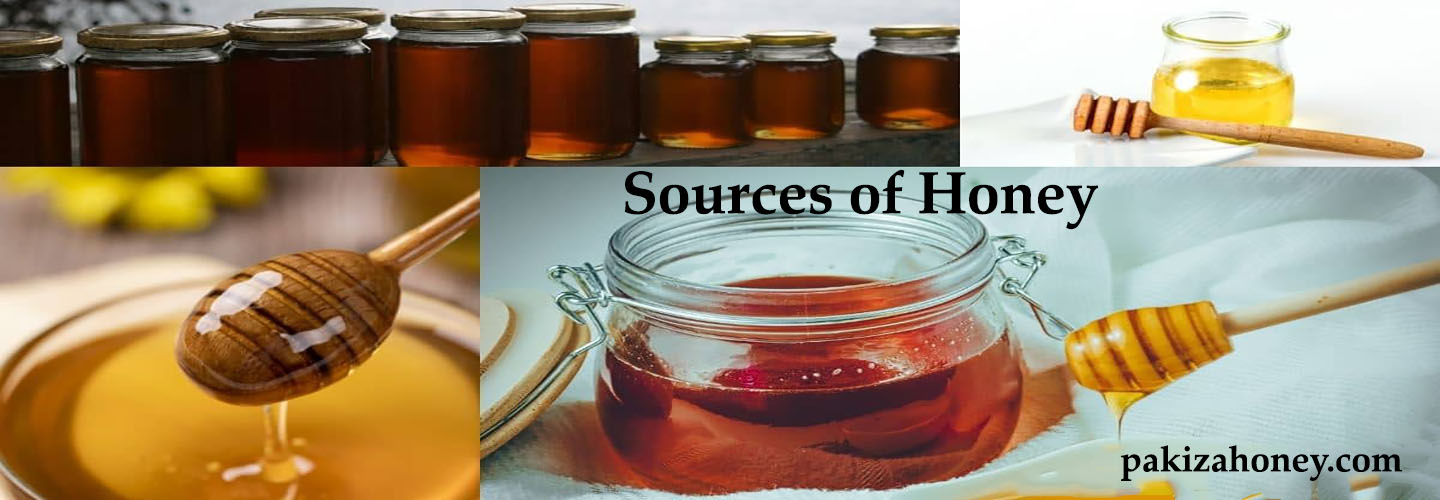- Your cart is empty
- Continue shopping
Sources of honey
Honey is a sweet, viscous liquid that is produced by honeybees from the nectar of flowers.
The process of making honey involves bees collecting nectar from flowers and transporting it back to the beehive, where they add enzymes to break down the complex sugars in the nectar into simple sugars, such as glucose and fructose.
The flower source is a critical factor in determining the flavor, color, and nutritional content of the honey. Bees collect nectar from flowers and bring it back to their hive, where they add enzymes and evaporate the excess water to create honey.
The characteristics of the nectar and the enzymes added by the bees contribute to the unique flavor and color of the honey. Different types of flowers produce different nectar, which results in different flavors of honey.
Additionally, honey derived from different flower sources may have different nutritional and medicinal benefits. Therefore, understanding the flower source of honey can help you choose the right type of honey for your taste and health needs.
The bees then evaporate the water from the nectar to thicken it and store it in honeycomb cells, where it ripens and matures.
When a cell has filled the bee is close by a wax cap. Honey contains about 80% of inverted sugar and 20% of water in this whole process.
The specific flowers that the bees collect nectar from will impact the flavor, color, and aroma of the honey. Here are some of the most common flower sources of honey:
Clover:
A widely cultivated crop that produces light-colored, mild-tasting honey that is popular in the United States.
Eucalyptus:
This tree is native to Australia and produces strong-flavored, medicinal honey that is used in cough syrups and other remedies.
Orange blossom:
The sweet nectar from orange trees produces light-colored, fruity honey that is often used in baking and cooking.
Lavender:
This fragrant plant produces light-colored honey with a delicate, floral flavor that is popular in Europe.
Acacia:
A species of tree that produces light-colored, mild-tasting honey that is popular in Europe and Asia.
Sunflower:
This popular garden flower produces dark-colored honey with a robust flavor that is prized for its unique taste.
Thyme:
This herb produces light-colored, aromatic honey that is popular in Mediterranean countries.
Wildflowers:
Bees can collect nectar from a variety of wildflowers to produce honey with a diverse range of flavors and colors, depending on the specific flowers visited.
Manuka:
A tree that is native to New Zealand and produces a unique, medicinal honey with antibacterial properties.
Buckwheat:
A crop that produces dark-colored, robust-flavored honey that is often used as a substitute for molasses.
It’s worth noting that the specific flowers that a bee colony visits will vary depending on the location and the time of year, so the source of honey can be quite diverse.
Sources of honey in Pakistan
Pakistan is a country known for its abundant natural resources, including a diverse range of flora and fauna that support beekeeping and honey production.
The main sources of honey in Pakistan are the wildflowers and crops grown in the country, such as sunflowers, eucalyptus, mustard, and lucerne. The country’s hilly terrain is the natural honey source, with its varied climates, also supporting the growth of a variety of plants, which in turn provides a diverse range of honey flavors.
Additionally, the traditional methods of beekeeping practiced in rural areas, combined with modern techniques, contribute to the high quality and quantity of honey produced in Pakistan.
In Pakistan, honey can be produced from a variety of flower sources, including:
Acacia:
Acacia trees are found in abundance in Pakistan and are a major source of honey. The honey produced from acacia flowers is light in color and has a mild flavor.
Mustard:
A widely cultivated crop in Pakistan that produces light-colored, mild-tasting honey.
Eucalyptus:
This tree is widely cultivated in Pakistan for its wood and oil, and it produces strong-flavored medicinal honey.
Sugarcane:
The sweet sap from sugarcane plants produces light-colored, sweet honey that is popular in Pakistan.
Wildflowers:
In rural areas, bees can collect nectar from a variety of wildflowers, producing honey with a diverse range of flavors and colors.
Basmati Rice:
This fragrant variety of rice is grown in the northern regions of Pakistan, and the flowers produce light-colored, sweet honey.
Fruit Trees:
In orchards, bees can collect nectar from fruit trees such as mango, citrus, and guava, producing honey with a fruity flavor.
Legumes:
Crops such as alfalfa, clover, and beans are grown in Pakistan, and their flowers produce honey with a sweet, mild flavor.
It is important to note that the specific flower sources available to bees will depend on the climate and geography of a particular region in Pakistan, as well as the time of year.
Overall, Pakistan is known for producing high-quality honey, and the diversity of flower sources allows for a range of flavors and types of honey to be produced.
Pakiza provides honey of different types to check out Click Here
To study further Click here

